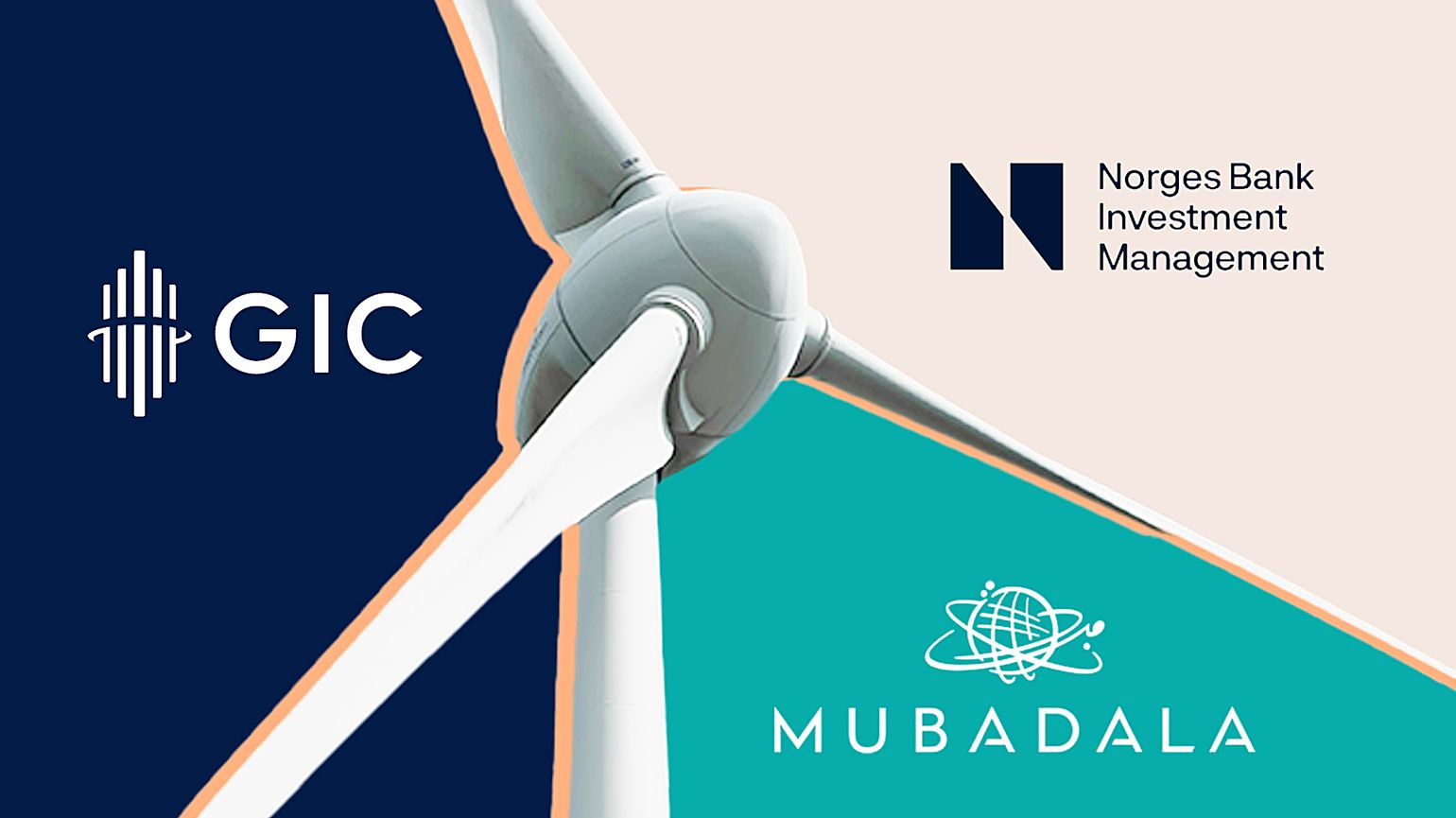The Rise and Rise of Sovereign Wealth Funds


Power or purpose – what exactly is driving the SWFs surge?
- Sovereign wealth funds are soaring in size and influence
Sovereign wealth funds are big, growing, and show no signs of slowing in their quests to secure economic diversification and stability at home and alter the course of development globally.
With more than $12tn in assets, SWFs have the power to move the dial on everything from healthcare to the energy transition, with emerging markets and private equity key targets for investment.
What is a sovereign wealth fund (SWF)?
A sovereign wealth fund (SWF) is a state-owned investment fund, a type of institutional investor that invests for the benefit of a country’s own economy and citizens.
SWFs hold, manage, or administer assets to achieve their financial objectives. Goals often include diversification to help stabilize their country’s economic base, improve the management of their public finances, and support high-quality growth at home and abroad.
SWFs take a variety of forms; fiscal stabilization funds, savings funds, reserve investment corporations, development funds, and pension reserve funds without explicit pension liabilities.
Cross-border investing is a feature of sovereign wealth funds. Their investments have helped promote growth, prosperity, and economic development in both capital-exporting countries, where there is excess wealth to invest, and capital-receiving countries, where investment is sought.
SWFs also bring substantial benefits to the global markets, as long-term investors can ride out shorter-term business cycles in a way that can be extremely beneficial, particularly during periods of financial turmoil or macroeconomic stress.
Sovereign wealth funds fall into two camps with their sources of wealth:
- Commodities: exports that are taxed or owned by the government
- On-commodities: revenues from the transfer of assets from official foreign exchange reserves
The meteoric growth of SWFs
The term ‘sovereign wealth fund’ was coined in 2005 but sovereign funds have existed at least since the 1950s. SWFs in their early form often started out as commodity stabilization funds and grew from there.
The Kuwait Investment Authority, for example, established in 1953, was an early sovereign fund used to manage the Gulf nation’s then burgeoning oil wealth. It is now the oldest sovereign wealth fund in the world and invests in everything from real estate to global equities.
Sovereign wealth funds’ more recent activity as global investors, however, has seen them experience meteoric growth. In the year 2000, SWFs held $1.2tn in assets, but that has soared more than 11-fold to $12.04tn as of June 2024, according to the Global SWF Data Platform.
This ballooning in assets under management was helped during the early 2000s by an explosion in the number of sovereign wealth funds – 56 were created between 2000 and 2010 alone.
SWFs are not spread evenly around the world though. Forty-two percent of global sovereign wealth assets are in oil-rich Middle East and North African (MENA) region countries. The next biggest placement of SWF wealth is Asia (34 percent), followed by Europe (17 percent).
Much smaller SWFs are in Oceania countries including Australia and New Zealand (4 percent), North America (3 percent), sub-Saharan Africa (1 percent), and Latin America (less than 1 percent).
Sovereign wealth funds have become significant global investment players – they invested a record $257.5bn across 743 deals in 2022, according to the World Economic Forum, with the highest ever number of $1bn-plus ‘mega-deals’ also completed that year.
Five of the top 10 most active sovereign wealth funds in 2023 were from the Gulf region.
The world’s most prominent SWFs
Mubadala
Abu Dhabi’s $280bn Mubadala Investment Company was born out of a merger of the Mubadala Development Company and the International Petroleum Investment Company in 2017. The Abu Dhabi Investment Council joined in 2019.
Capital-intensive industries – aerospace, real estate, semiconductors, healthcare and renewable energy – are Mubadala’s areas of interest. It also likes tech – examples include GlobalFoundries, a semiconductor foundry of which Mubadala is the parent company, logistics software startup Turvo, Alphabet-owned self-driving technology company Waymo, UK life sciences company Envision, and Telegram.
Mubadala is also a big investor in private credit, taking equity stakes in asset managers, such as Fortress, and partnerships with private equity firms – including co-investing $1bn with KKR in Asia-Pacific in 2022, and a $2.5bn joint venture with Alpha Dhabi, alongside two separate $1bn deals, in 2023.
Public Investment Fund
Saudi Arabia’s PIF has around $925bn in assets under management and last year returned to the black with a profit of $36.81bn, after posting a loss of $15.6bn in 2022.
Better performance in both investment and non-investment activities in sectors like banking, telecommunications and gaming, plus increased dividends, were behind the turnaround, the company said.
PIF is what Saudi’s Crown Prince Mohammed bin Salman uses to power his strategy to move the country away from its economic reliance on oil. The plan – Vision 2030 – has seen PIF invest hundreds of billions of dollars in projects to increase the country’s diversification economically, socially and culturally.
GIC
The Government of Singapore Investment Corporation was established in 1981 to manage Singapore’s foreign reserves and is now invested in more than 40 countries worldwide with assets under management estimated at $769 billion at the end of 2023.
GIC held back last year, cutting spending by 51 percent to $19.9bn down from $40.3bn in 2022. The reticence meant the SWF fell from first to second place in the most active state-owned investor ranking, the first time since 2017 it hasn’t held the top spot.
Last year also saw a significant change in GIC’s appetite. It invested in developing nations 2.6x times what it did in 2022. By way of example, GIC is among the leading investors in the Indian real estate market. In 2023, it invested $1.4bn in a joint venture with Brookfield India REIT to build two large commercial office assets in Mumbai and Gurugram.
What’s driving this growth?
With many SWFs’ underpinned by petrodollars, oil price fluctuations have a big impact on their fortunes – the drop in oil prices in late 2014 slowed SWF growth, and a reversal came after 2016 when oil prices rose again.
The post-pandemic rebound in economic activity, and the energy supply uncertainty caused by Russia’s invasion of Ukraine, have once more led oil prices to rise, benefitting petro-rich SWFs.
Oil prices’ upward trend as a key driver of MENA region SWF growth in particular can be seen in the average annual price of OPEC crude oil. Prices hit record highs in 2012 at $109 a barrel – a remarkable rise from $1.82 in 1972 – and after a period of volatility the price is currently back up around $90 a barrel.
SWFs’ growth is affected by investment decisions as well as global economics. Mubadala Investment Company, for example, despite being a SWF from oil-rich Abu Dhabi, has benefited from backing tech companies that have soared in value over the last decade.
Sovereign wealth funds are also increasingly being attracted by the high growth story of emerging markets – their own and others. More than $65bn was invested by state-owned funds in emerging markets last year, up from 17.3 percent from 2022, according to GlobalSWF’s 2024 annual report.
Sovereign investors are also investing more into private equity funds – adding to their already considerable holdings in this area – and are joining forces in ‘mega-deals’. Private equity deals originated by state-owned investors grew 4 percent from $76.5bn to $79.4bn in 2023.
Other key drivers of growth include investments in the industrial and manufacturing sector – up 27 percent over the last year and representing nearly 30% of total private equity investments – and the energy sector, with both trends part of strategies to benefit from the energy transition.
An increase in focus on ESG
Sovereign wealth funds are increasingly investing in line with environmental, social and governance (ESG) principles – having been long-time laggards in this area. Over the last five years, SWFs have in particular invested in projects backed by the UN Sustainable Development Goals (SDGs), a study last year found.
Sector-level examples include climate-related initiatives and renewable energy, agriculture, and to a lesser degree, education, “as SWFs appear to extend their investment remits slowly but surely into other long-term investment themes”, the study’s authors said.
With their increasing level of assets invested in public and private equity holdings, SWFs are in a position to exercise greater influence on corporate governance practices and responsible ownership. Likewise, state backing for ESG investing is a strongly supportive indicator for the private sector to act as well.

SWFs have the advantage of being multi-generational investors that can provide patient capital to long-term ESG themes, like the energy transition, a cause that fundamentally affects a large number of oil-backed SWFs.
Norway’s Government Pension Fund Global (GPFG) – at $1.3tn the world’s largest savings SWF – is a stand-out example of responsible investing. An early adopter of negative screening, it divests from companies found to be committing human rights violations or causing severe environmental damage.
And yet, GPFG – also known as the Oil Fund – gets its vast wealth from the fossil fuel that is contributing to climate change, in a contradiction many commodity-backed SWFs face when approaching ESG investing.
However, given the sheer size of their assets, if they act sovereign wealth funds can have a dramatic effect on achieving the sustainable development goals, and contribute significant sums to help fill the financing gap developing countries face in the journey to net zero.
Henry Jones is EQT's Director of Content and the Global Head of ThinQ by EQT. Before joining EQT, he was an editor and content director for brands and media companies including Dyson, The Evening Standard and John Lewis.
ThinQ is the must-bookmark publication for the thinking investor.



